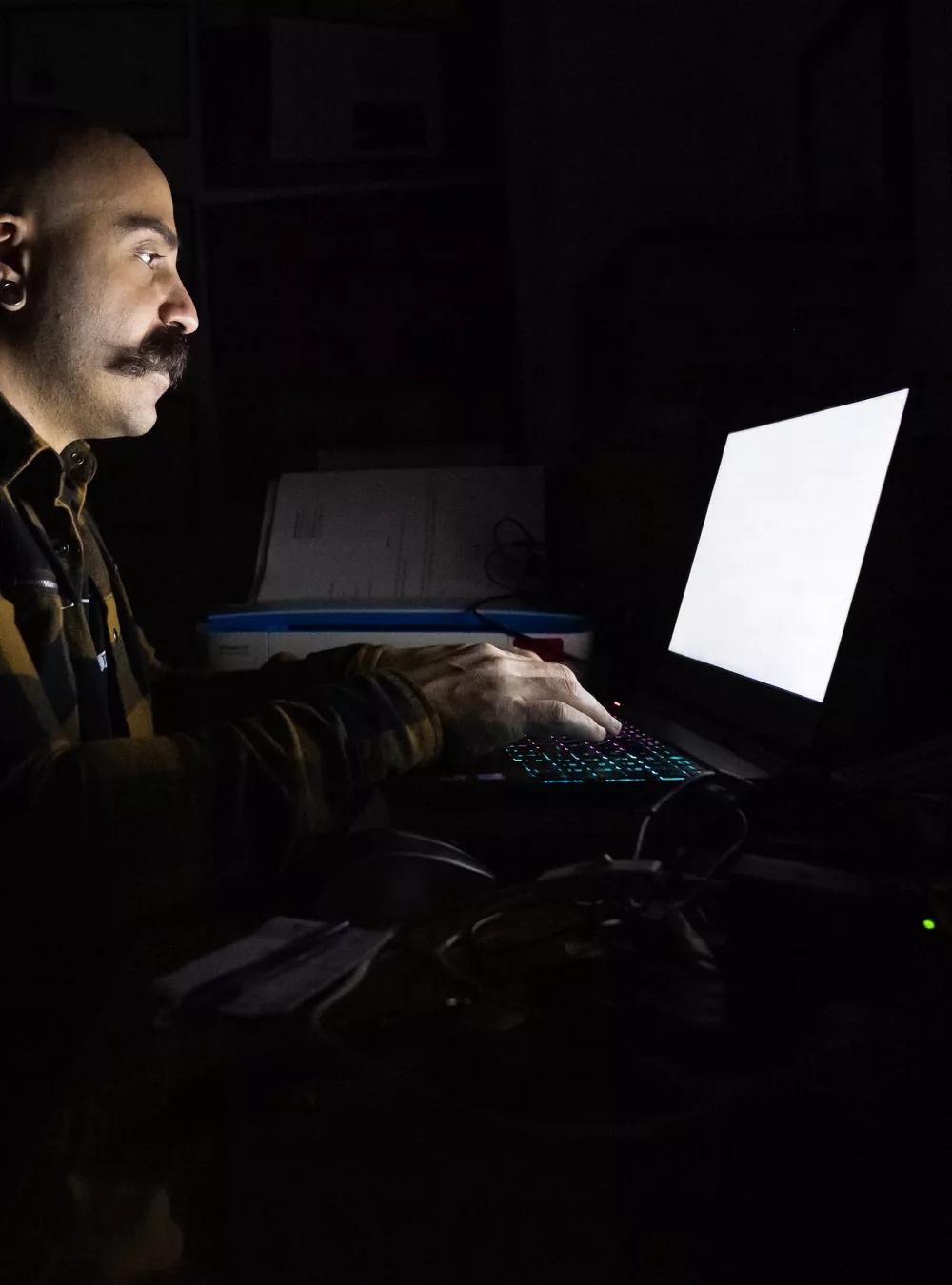Our cyber threat hunters kicked off a series of hackathons to combat criminals online. For MITRE's Adam Hammond, the issue is personal.

Cyber Experts Volunteer to Help Fight Child Traffickers Online
The U.S. Department of State estimates 27.6 million victims are trafficked worldwide at any given time. More than two-thirds are forced into labor, including more than 10 million adults and nearly four million children.
Advanced technology and internet connectivity have exacerbated already bleak figures. For reference, reports of child sex abuse material online have shot up 15,000% over the last 15 years.
Like most complex problems, the solution is not straightforward. But for Adam Hammond, a manager for cyber operations at MITRE, there’s no better way to start than by starting. He and colleagues Leslie Anderson, chief strategist for cyber operations, and ShaRhonda Mirizzi, business operations manager, organized two day-long gatherings over the last six months convening coders and engineers for a common goal.
Coined “Hackathons for Good”—the events are meant to raise awareness and chip away at cyber challenges that can help disrupt trafficking and other crimes against children.
When Hacking Becomes a Personal Investment

Before MITRE, Hammond became attuned to the trafficking epidemic while developing a cybersecurity tool to support law enforcement in their efforts to catch bad actors. He was especially disturbed to learn that 60 to 90 percent of all trafficked children are connected to the foster system. “When kids age out or run away, they lose support and become particularly vulnerable to exploitation,” he explains.
Hammond’s priorities shifted in a dramatic fashion.
“The experience sent me on a research journey where I uncovered the heart-breaking statistical outcomes awaiting many kids who age out of foster care,” he says. “I suddenly took on a ‘let's adopt all the kids and all the dogs and get a farm and everybody stays’ attitude.”
Hammond became a foster parent, and he and his wife have since adopted Damaya and Isabella, ages 7 and 6. At MITRE, he tapped his prior experience and engaged with project work supporting law enforcement efforts to combat child exploitation online.
He and Anderson designed the hackathons to act as an extension of the work, leveraging our wide-ranging cybersecurity expertise to automate systems and processes that will ultimately bring law enforcement closer to catching traffickers.
I believe we can be impactful in our role uniting government, nonprofit organizations, and private industry to genuinely make the world a safer place for kids.
Two Hackathons, One Collective ‘Technical Hammer’
In May, the first event in McLean focused on bolstering the capabilities of Collective Liberty—a nonprofit organization that aids law enforcement agencies in prosecuting traffickers.
Thirty-five volunteers spent eight hours creating tools to sift through mountains of data from nefarious internet sites, performing web scraping and data triage, sorting, categorizing, and prioritization. The efforts resulted in the collection of actionable data that can be used to expedite legal cases against trafficking suspects.
“The work we did in hours may have taken their small team months,” explains MITRE's Akash Trivedi, a lead cybersecurity researcher, who helped seize the day by decomposing challenges and delegating to his team. “We provided the technical hammer to get Collective Liberty closer to their mission.”
"The work has dramatically scaled our impact and productivity in ending trafficking—freeing up our staff time to use the information, instead of spending so much time collecting it,” says Collective Liberty CEO, Rochelle Keyhan. “Resource sharing and partnership really can change the world!”
For the second hackathon in October, 12 engineers from our Bedford, Mass. campus caravanned two hours to the University of Massachusetts in Amherst to collaborate with the school’s Rescue Lab, which aims to protect children on the internet.
Along with 25 computer science graduate students, the group split into four teams divided by their respective capabilities. By the day’s end, the team had created tools providing safeguards for children online, including a text model identifying violent and abusive language on high profile targeted sites, a model identifying violent imagery with high precision, and functional web scrapers.
Hacking on the Horizon
Up to this point, Hammond and others have dedicated company-provided volunteer hours to these projects. He is hopeful that MITRE can continue its work helping sponsors fill technological gaps to impact change on the front end of the problem (e.g., disrupt the financial, IT, and social systems that enable criminal activity) to complement the many nonprofit and law enforcement agencies working to support victims on the back end. Regardless, he notes: “the heart for the mission is there.”
“We joked that this team was ‘weaponizing civic time’ to stop crime," says cybersecurity engineer Troy Townsend.
Hammond has four tentative hackathons on the horizon for 2024—March 1 in partnership with the Huntsville, Ala. office, May in McLean, October in Bedford, and one in San Diego, Calif.
“Sometimes our work gets diffused across different groups, making us far removed from its impact,” Trivedi says. “This effort bridges the divide in a really powerful way.”
For information on how to get involved, email Adam Hammond ahammond@mitre.org.
Interested in solving problems for a safer world? Join our community of innovators, learners, knowledge-sharers, and risk takers. View our Job Openings and Student Programs. Subscribe to our MITRE 360 Newsletter